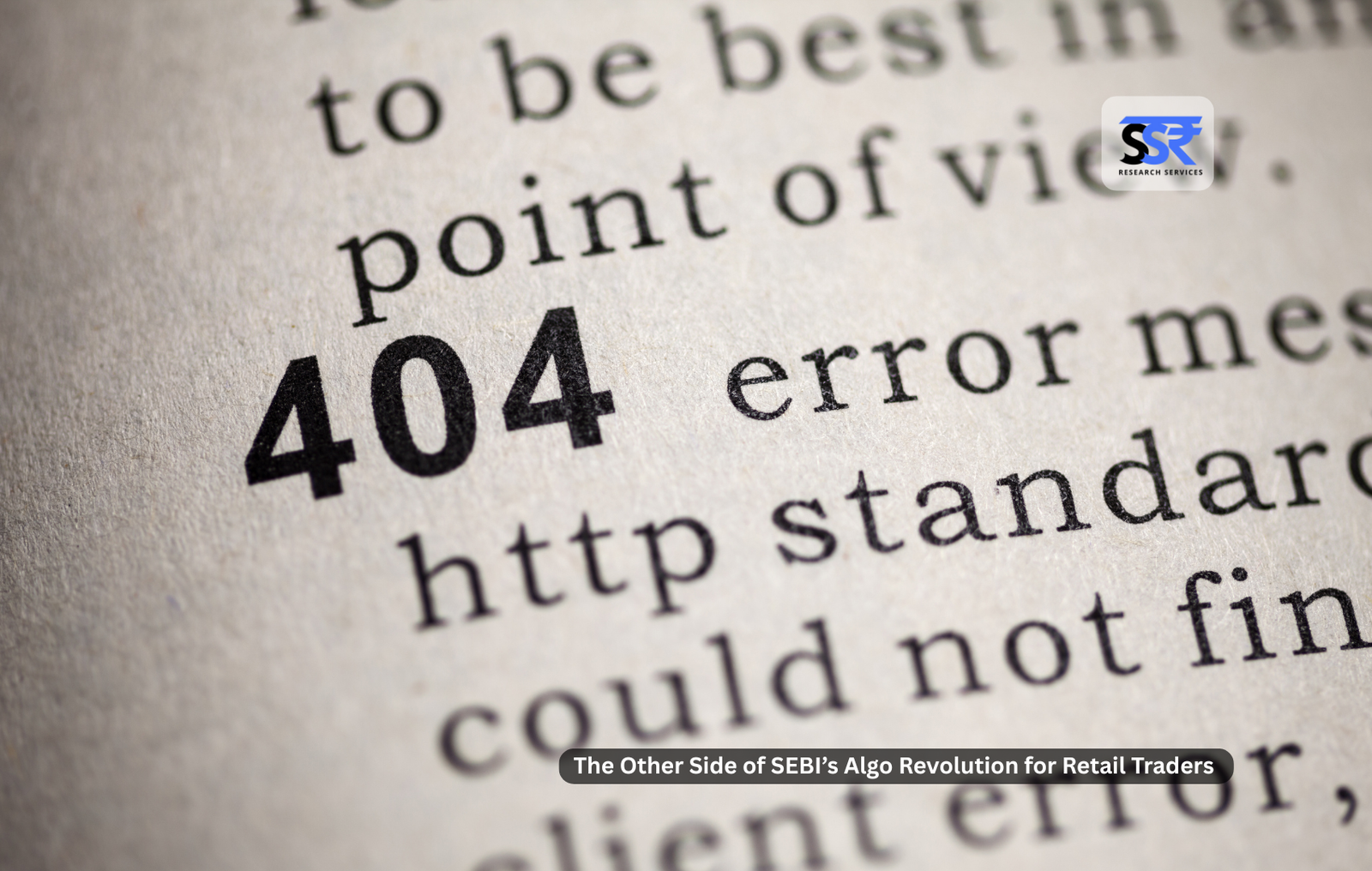
The Other Side of SEBI’s Algo Revolution for Retail Traders
In February 2025, the Securities and Exchange Board of India (SEBI) introduced a long-awaited regulatory framework for algorithmic trading access for retail investors, under the circular SEBI/HO/MIRSD/MIRSD-PoD/P/CIR/2025/0000013.
Soon after, the National Stock Exchange (NSE) followed with its own set of implementation guidelines, NSE/INVG/67858. The announcements have been called by many as a significant moment in the Indian markets, a major step of sorts towards leveling the playing field between institutional traders and the average retail investor.
But amidst this enthusiasm, an important question arises: Are we collectively ignoring the risks that come with this ‘Algo Revolution’?
What is Algorithmic Trading?
Simply put, algorithmic trading (or algo trading) refers to using computer-generated code to automate the process of placing buy or sell orders in the financial markets. Instead of logging into a broker’s app or website and placing orders manually, traders use Application Programming Interfaces (APIs) to send instructions electronically.
For example, suppose you want to buy 10 shares of Reliance every time its stock price exceeds ₹1,000. You can create a simple algorithm that continuously monitors the price and executes a buy order automatically when your condition is met. This is algo trading in its most basic form.
While this technology benefits all market participants, its real power lies in derivative trading particularly in Futures and Options (F&O). Given that F&O products are leveraged i.e. requiring only a fraction of the total trade value as margin, algo trading enables lightning-fast entries and exits, allowing traders to capitalize on small price movements in seconds.
The SEBI & NSE Regulatory Framework
The February 2025 circular clarifies who can participate and under what conditions:
- Tech-savvy individuals may develop algos for personal use.
- Only Brokers and SEBI Registered Research Analysts (RAs) can legally develop and distribute algos to clients.
- Two algo categories:
- White-Box Algos: Rule-based, transparent, publicly known strategies. Brokers can offer these, subject to exchange registration.
- Black-Box Algos: Proprietary, complex strategies with confidential rules, typically developed by RAs for clients.
- White-Box Algos: Rule-based, transparent, publicly known strategies. Brokers can offer these, subject to exchange registration.
The NSE’s guidelines impose checks such as: Thresholds on orders per second, mandatory order tagging to trace origins, exchange approval for all algos before deployment While these rules aim to promote responsible use, concerns exist about how it will play out in the real-world.
Potential Benefits of Retail Algo Access
SEBI’s initiative brings several advantages: Broader access to institutional-grade technology, efficient, emotion-free trading, potential to automate complex strategies,and lastly, democratization of tools like APIs and algo platforms, historically reserved for institutional players. However, with access comes risk.
The Risks very few are Discussing
Revenue Pressures Leading to Over-Promotion
Post-2024, SEBI curtailed excessive speculative activity by limiting weekly expiry options to one benchmark index per exchange. This move hit broker and exchange revenues, heavily reliant on derivative trading by a small, active subset of investors (roughly 5% of total equity market participants).
With declining revenue streams, there’s concern that brokers and SEBI Registered RAs may aggressively market algos, promising outsized returns, a classic recipe for investor losses.
SEBI’s attempt to set up a performance validation agency is a great step in this direction, but again there seems to be delays in the implementation of it.
Overcrowding and Liquidity Concerns
Algorithmic strategies work best in highly liquid markets. A surge of retail traders using similar algos could wreak havoc in thinly traded derivatives, leading to poor order fills or slippages eroding profitability.
Talent Shortages in Strategy Development
Designing profitable, automatable trading strategies requires: Strong quantitative aptitude, deep derivatives market knowledge, advanced coding skills. The current NISM certification for research analysts focuses more on fundamental market principles than algorithmic or quantitative competencies, raising questions about whether the available talent pool can meet the demand for robust, scalable algos.
Execution Risk: From Strategy to Code
Even with a sound strategy, transforming it into executable, reliable code is complex. Minor errors can lead to malfunctioning algos or worse, rogue algorithms triggering erratic market activity. While exchange-approved third-party algo platforms may help, their tech and infrastructure readiness remains untested at scale.
Market Manipulation and Fraud
The recent case where SEBI barred two operators for manipulating illiquid options markets, defrauding investors of ₹4.83 crore, highlights the existing issues. As algos proliferate, especially in less liquid instruments, the risk of similar schemes playing out only increases.
Are Current Safeguards Sufficient?
SEBI’s framework emphasizes: Capping order per second, mandatory traceability via order tagging, exchange vetting of each algo
But some gaps remain:Inadequate quantitative training for RAs, limited oversight on algo marketing claims, market liquidity mismatches, low retail investor awareness of risks, technical glitches in poorly designed algos.
The upcoming registration process for algo platforms may address some concerns, but investor education and stricter enforcement remains as important.
Conclusion: Algo Trading – A Double-Edged Sword
SEBI’s retail algo framework is definitely progressive, opening doors to technology-driven trading for all. But premature optimism can sometimes shadow real challenges. Retail traders must temper expectations, recognizing that while algos automate processes, they do not guarantee profits.
As a market veteran once said, “The only thing an algo guarantees is that it helps you lose money faster, with no human intervention”
So proceed with caution, stay informed, and remember, technology is just a tool, and in no way a shortcut to success in stock markets.
I am on X @mysandz follow me for the latest blog updates. If you are serious about systematic quant based investing or trading explore our subscription plans here.




